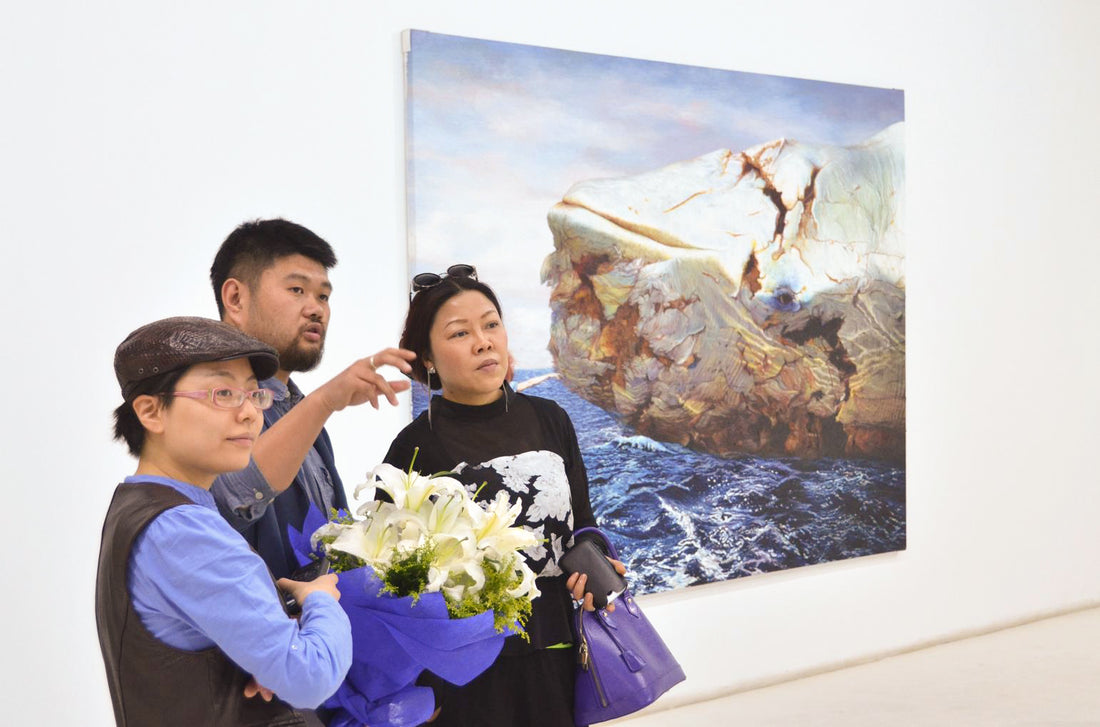CLOUD ATLAS,Solo Exhibition,Space Station Gallery, BeiJing,2014
This is a story about solitude and conflict, reality and emotions. Even if we do not tell it, Shang, at the very beginning has limited our sights within a perceivable scope, so accurate that what we are facing and our inner choice are standing in sharp conflict. Good news is that the scope does not produce much loneliness, but just a world of me and another me. In fact, this is a state void of the real and the outside world, and also the very way through which we walk into our inside world, and those “clouds” are the doors and windows to enter from. Rid of the omnipotent reality that seems to have all the word under control, we obtain our own freedom. On the other hand, those spiritual symbols in the painting may be just the murmur between the two selves. Reality and fantasy, solitude and conflict undergo ups and downs like the waves in our life journey; but orders seem to have always existed governing these chaos, and occasionally disrupting our excessive imaginations which, more interestingly, we also need in our pursuit of the truth and self-balancing. This seems to be a de-fantasized or de-rationalized process; and in the end, the virtual world in the painting converges with our perceivable world, where the real feelings and inspirations spring up for some time and are quickly washed away by the tides of thoughts.






Shang always depicts some “unrealistic” scene by using large size canvas, like in Unescapable Dream, the wreckage of a damaged ship appears in a vast expanse of cornfield, and kids are strapped by plastic bags and toy horses; Your Face describes a stranded whale wrecked by the oars, and a little girl wants to control or stroke it; Horror Series portrays docile animals, whose eyes and the bits are gleaming with ferocious emotions as well as the strength to rebel. These powers can be either long neglected, or constantly gathered. Shang carefully conceals these details, making them like a timer of a bomb, urging you to discover all the unusualness within the countdown.
A most significant question, however, is who the protagonists of his works are. This means that the spectators are placed in different locations, with some gazing on the animals, and some besieged by the atmosphere created by the paintings. That is to say, Shang intends to narrate a quasi-circular story, in which he lets the viewers to discover, as if the depicted scene is pregnant with inexhaustible meanings: the beginning is also the end; the portion is also the whole.
Just when you think you have seen the light, Shang explains all these as two separate but closely related selves. It is said that he often fails to distinguish reality and truth, as the aforementioned that he cannot tell whether he is in dreams or reality in the daytime. For instance, in Partake of the Feast, where three goats of different appearances represent several different types of person; it is hard to tell who is the most dangerous, for they are either masqueraded or fierce or submissive, but these are only the appearances: maybe the best mask is without mask. The meat in the painting represents the interests, and those blooming flowers at the background suggest these three goats are to partake of the feast in such a flowery environment.
If we disregard all those literary metaphors, what Shang aims to express still remain. This shows that his way of constructing the work is still conventional and purely visual, which is different from most contemporary artists who rely on the hermeneutics of texts and notions. If we go on to strip off those props on the aforementioned animals, you will find, as a spectator, that those eyes also reveal human nature.










